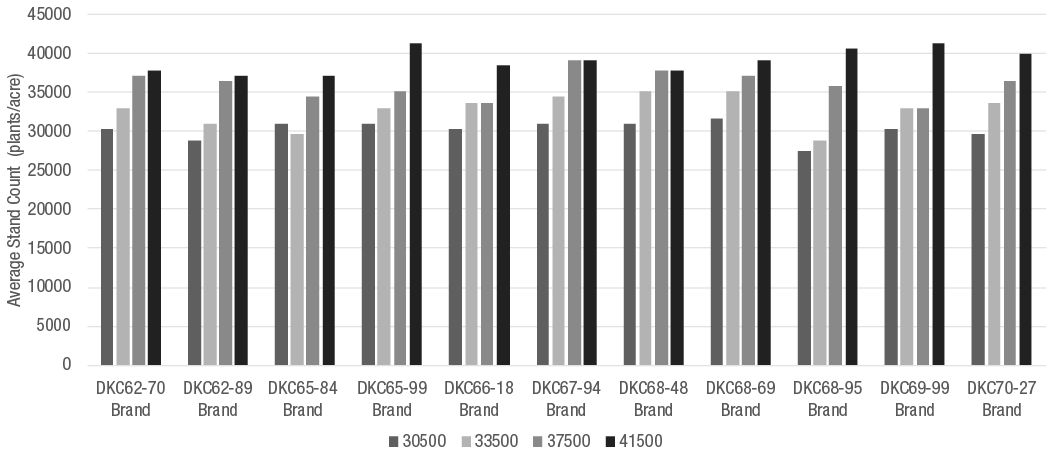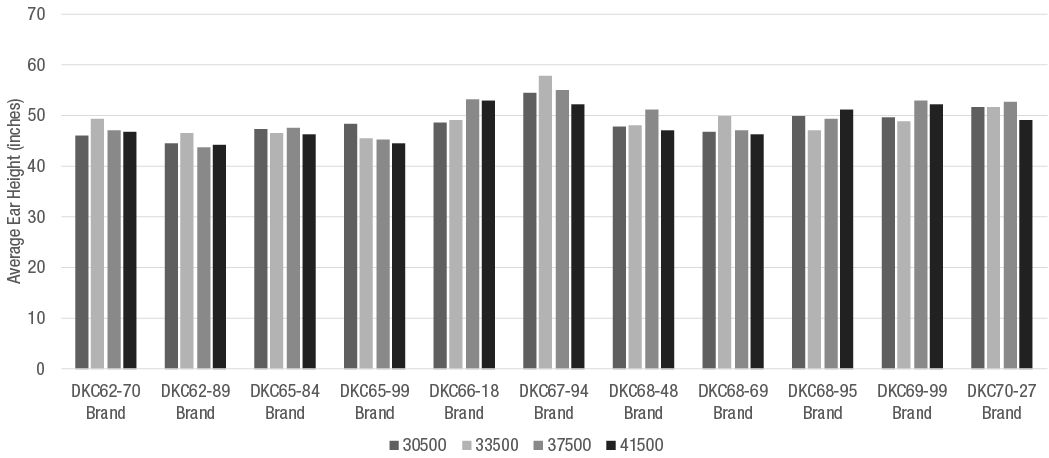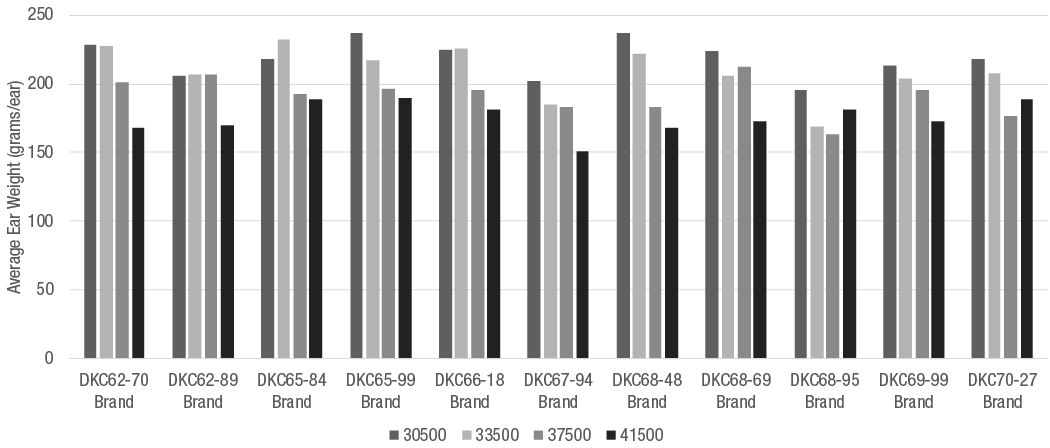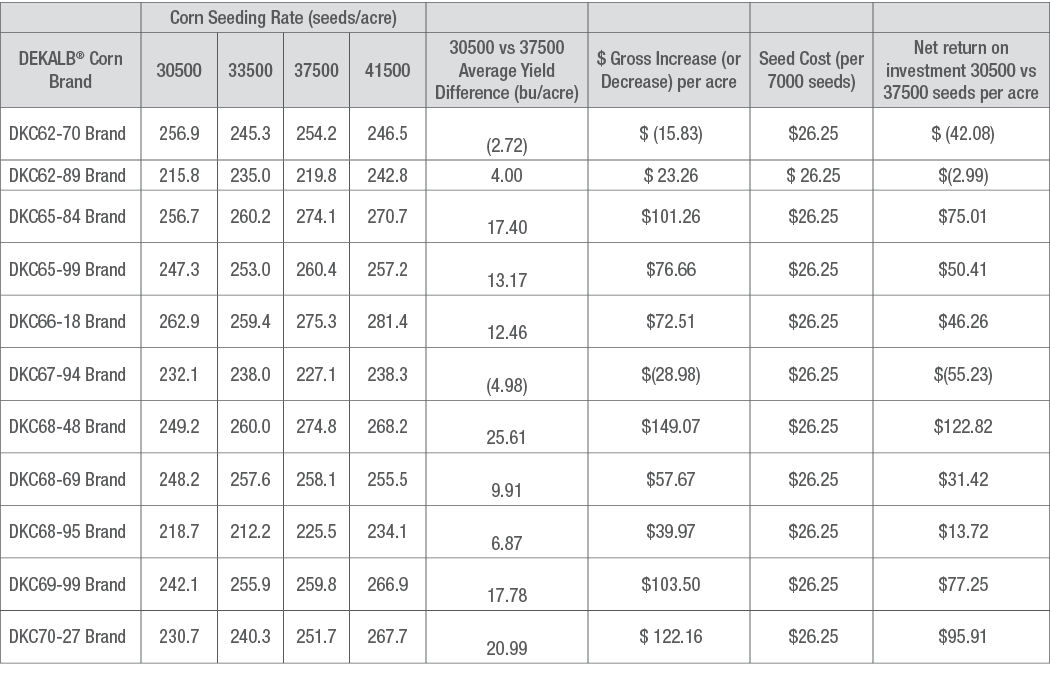12 MIN READ
Yield Potential of DEKALB® Corn Products to Seeding Rate
October 27, 2021
Click on a tab below to see the data collected for 2018 - 2021
TRIAL OBJECTIVE
Each season the Bayer Learning Center near Scott, Mississippi (SLC) evaluates a new class of corn products for adaptability to the southern corn growing region and their response to planting population.
The evaluations are conducted at the SLC on soils with very high yield potential which are representative of the alluvial delta.
Yield potential and plant characteristics (height, ear size) are very important factors to consider when choosing a corn product for your operation. Both height and ear size can have an influence on lodging potential and should be carefully considered when choosing a corn product to plant for 2022.
The objective of this trial was to evaluate the yield potential and standability of DEKALB® corn products to planting populations.
Dekalb Corn Seeding Rate Considerations
In this video, Jay Mahaffey and guest technical agronomist Sammy Soignier discuss the importance of corn population when producing a corn crop.
RESEARCH SITE DETAILS
All field work, tillage and herbicides were per local standards.
The standard 275 lbs N applied to both experiments as liquid 28-0-0-5
Products planted
DKC62-70 BRAND
DKC62-89 BRAND
DKC65-84 BRAND
DKC65-99 BRAND
DKC66-18 BRAND
DKC67-94 BRAND
DKC68-48 BRAND
DKC68-69 BRAND
DKC68-95 BRAND
DKC69-99 BRAND
DKC70-27 BRAND
The trial was conducted as a single strip plot and each plot was approximately 0.125 acre.
Commercial harvest machinery
All yields were corrected to 15.5% moisture
| Location | Scott, MS |
| Soil Type | Commerce/Forrestdale SiL |
| Previous Crop |
Cotton |
| Tillage Type |
Conventional |
| Planting Date | 04/06/21 |
| Harvest Date | 08/25/2021 |
| Potential Yield (bu/acre) |
300 |
| Seeding Rate (seeds/acre) |
30.5K, 33.5K, 37.5K, 41.5K |
- Planted on 38-inch single rows
- Trials averaged 97% stand establishment.
- Plant characteristics were measured since many growers often ask those questions. They can combine with other corn product characteristics to have an influence on lodging potential.
- Data collected as follows:
- Yield obtained by commercial combine via whole plot harvest – corrected to 15.5% moisture
- Established plant population counted on two 10 foot sections of row mid-season and converted to plants per acre.
- Ear height (inches) – Prior to harvest ear height from the soil line to the ear shank was measured on 10 ears per plot.
- Ear weight (grams shelled corn/ear) – Prior to harvest 10 ears were collected and shelled for ear weight estimations by corn product.
UNDERSTANDING THE RESULTS





- Yields across this entire study averaged 250 bu/acre across all corn products and populations. This is exceptional corn for the delta system. A typical grower would expect an average yield of 200 to 220 bu/acre on this soil type.
- Stand Establishment – This entire experiment averaged 97% for final stand (Figure 1).
- Plant Population – Across all planted products and populations, typical responses to population were observed in that, yield generally increased as population increases. However, individual corn products did respond somewhat differentially to increasing population.
- Across all the tested products, an average increase of 11 bu/acre was observed when increasing population from 30,500 to 38, 500 seeds/acre (Figure 4).
- Considering seed costs of $3.75/1000 seeds and $5.82/bu (cash price at harvest) the net return improvement is $37.50 for all tested products (Table 1). Net gain is higher for some products than others and growers should carefully evaluate each product for response to plant population.
- Negative consequences from increasing population can also be present. They were not present in this demonstration, but growers should also carefully consider population effects on fertility management and potential standability issues with corn products chosen for their operations.
- Ear Height – Up to 14 inches variability (32%) in ear height was recorded across the tested corn product by population combinations (Figure 2).
- Ear Weight – Up to 86.7 grams variability (57.6%) in ear weight was recorded across the tested products with ears typically being reduced in size as population increases (Figure 3).
- Yield - The top end yields in this environment for 2021 were around 280 bu/acre with a range from 212 to 281 bu/acre (Figure 4).
KEY LEARNINGS
Knowing the optimal seeding rate of a corn product can help maximize yield potential and profitability. This research can help growers evaluate DEKALB® corn product seeding rates for their operations.
Our observations at Scott Learning Center show that corn products can and do respond favorably to higher seeding rates. However, high plant populations can result in lodging and exacerbate harvest difficulties. Conversely, full yield potential may not be realized with lower than optimal seeding rates.
Growers should carefully evaluate each new corn product planted for its response to population in standability, yield and net return with multiple years and locations used for reference.
Seeding rate should be adjusted based on field yield potential levels and soil types, as well as the potential return on investment.
From 2021 ear height, ear weight and yield data we can infer that DEKALB® offers a robust lineup of corn products well suited to the Mississippi Delta region.
Growers should consider personal preferences and yield potential in combination with plant characteristics when choosing corn products. Contact your local Field Sales Representative or Technical Agronomist for planting recommendations for the current situation and year.
3013_R1